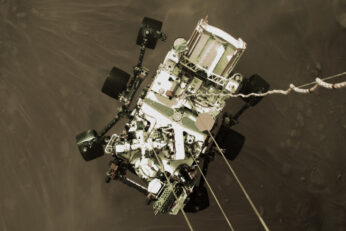NASA's Mars Perseverance rover is powered by the same chipset found in 1998's G3 iMac from Apple. Here are all the details on this.
After the fantastic discovery of Water on the moon last week, here comes yet another astronomical event that shouldn’t be missed at any cost. The annual Leonid meteor shower will peak on the dawn of November 17th (or 18th in some places) and will be visible all over the world. According to NASA, the best time to view the Leonid meteor shower in United States is after 1:30 AM EST (Eastern Standard Time) on 17th.
National Aeronautics and Space Administration, NASA in Jun 09, launched a lunar satellite into orbit, which was to fire a rocket booster at 5,600 MPH velocity into a Moon crater near the Southern Pole of the moon, to cause a six-mile-high explosion with the hope to find water on the Moon. NASA scientists were eager to see LCROSS (Lunar CRater Observation and Sensing Satellite) launching a Centaur rocket into the moon to cause a big blast in the crater. The massive explosion kick up 350 metric tons of debris, letting the trailing satellite cameras analyze the mess for signs of water. Scientists scouring the surface of Earth's satellite to search for a precious resource called “Water”. The satellite due some reasons could not be scheduled to reach the moon until October 8.
Follow the LIVE online launch of NASA STS-128 mission to the International Space Station on Space Shuttle Discovery in HD. Don't miss out as the crew of STS-128 mission which includes seven astronauts make their way for the liftoff from Pad 39a at the Kennedy Space Center in Cape Canaveral, Florida.


